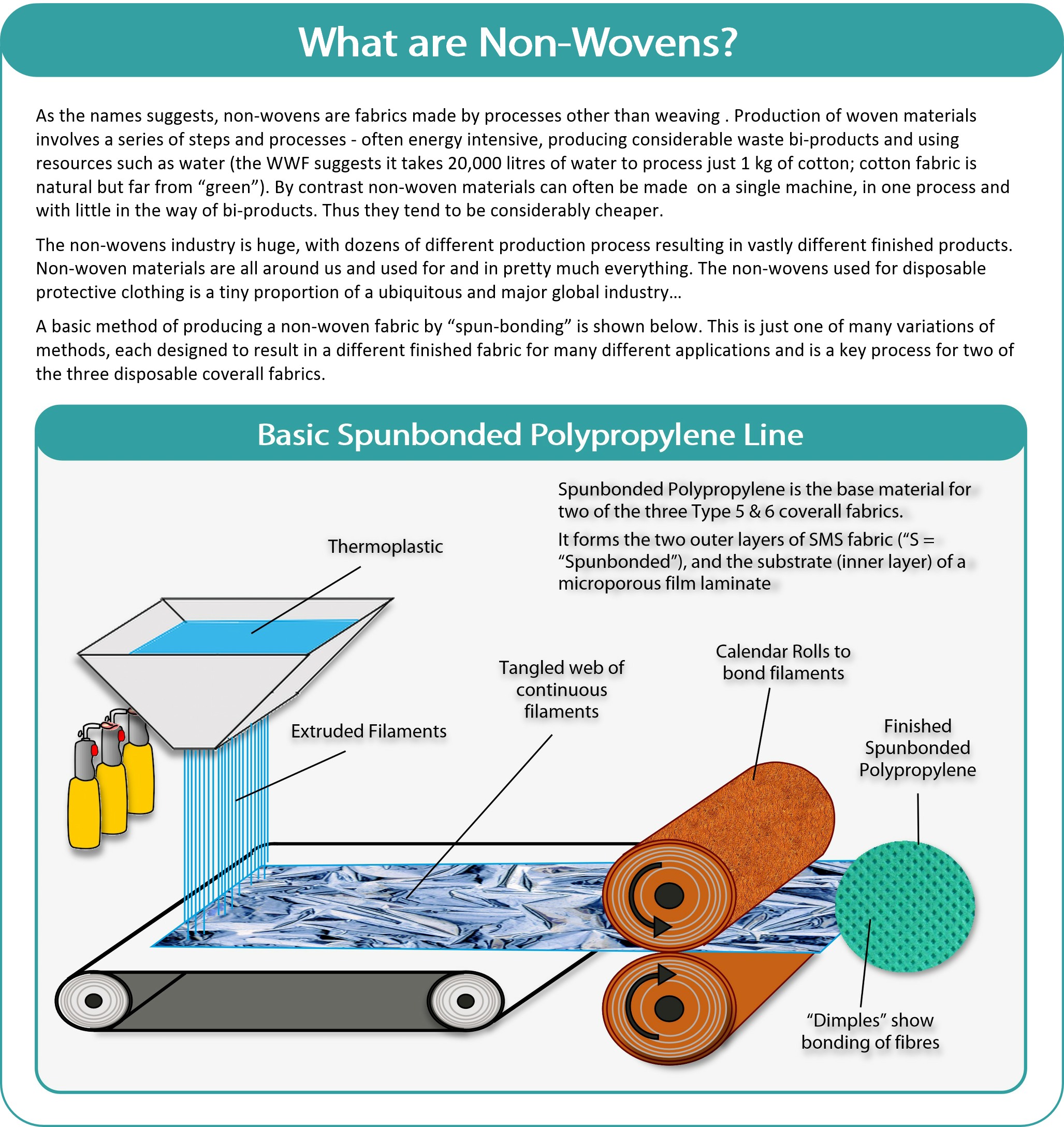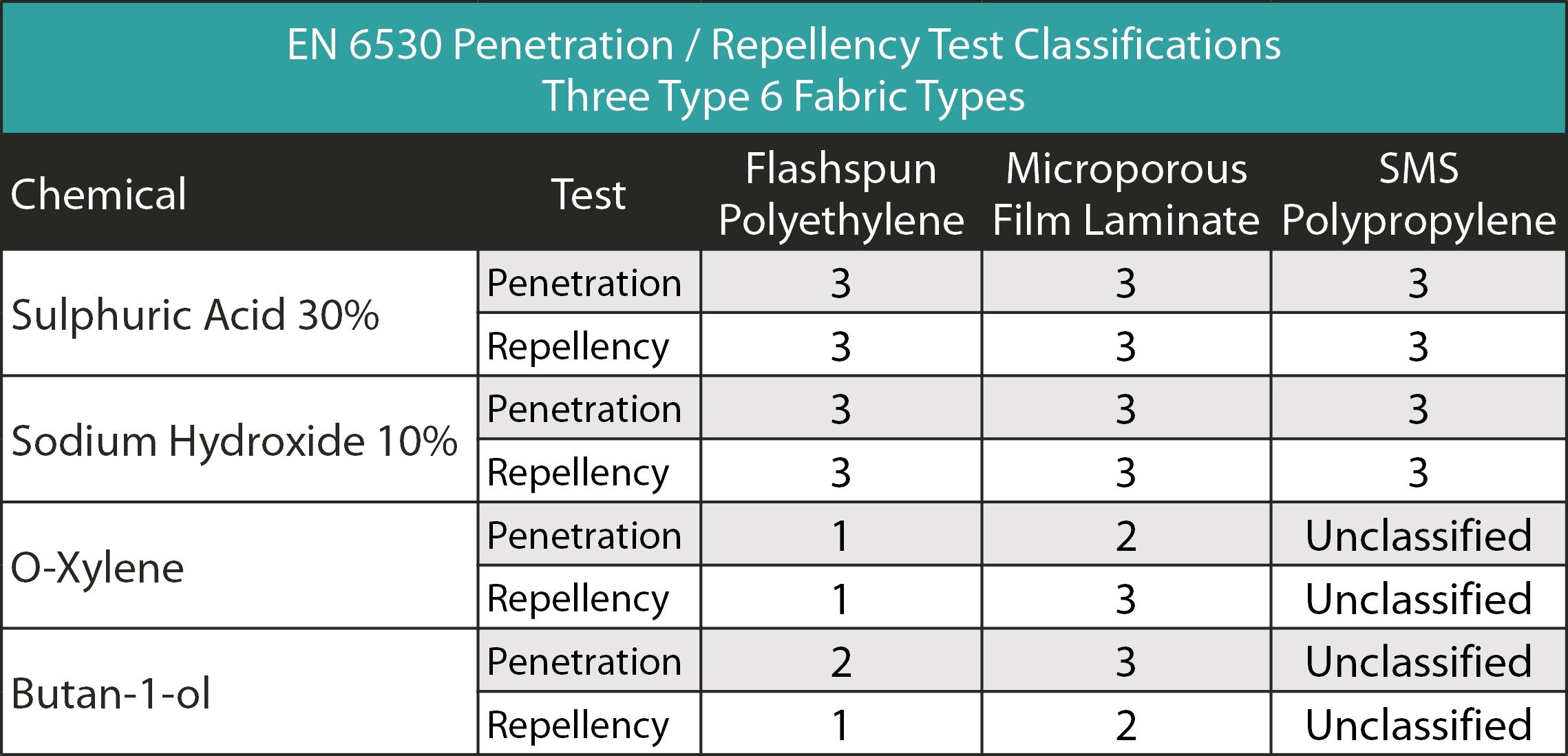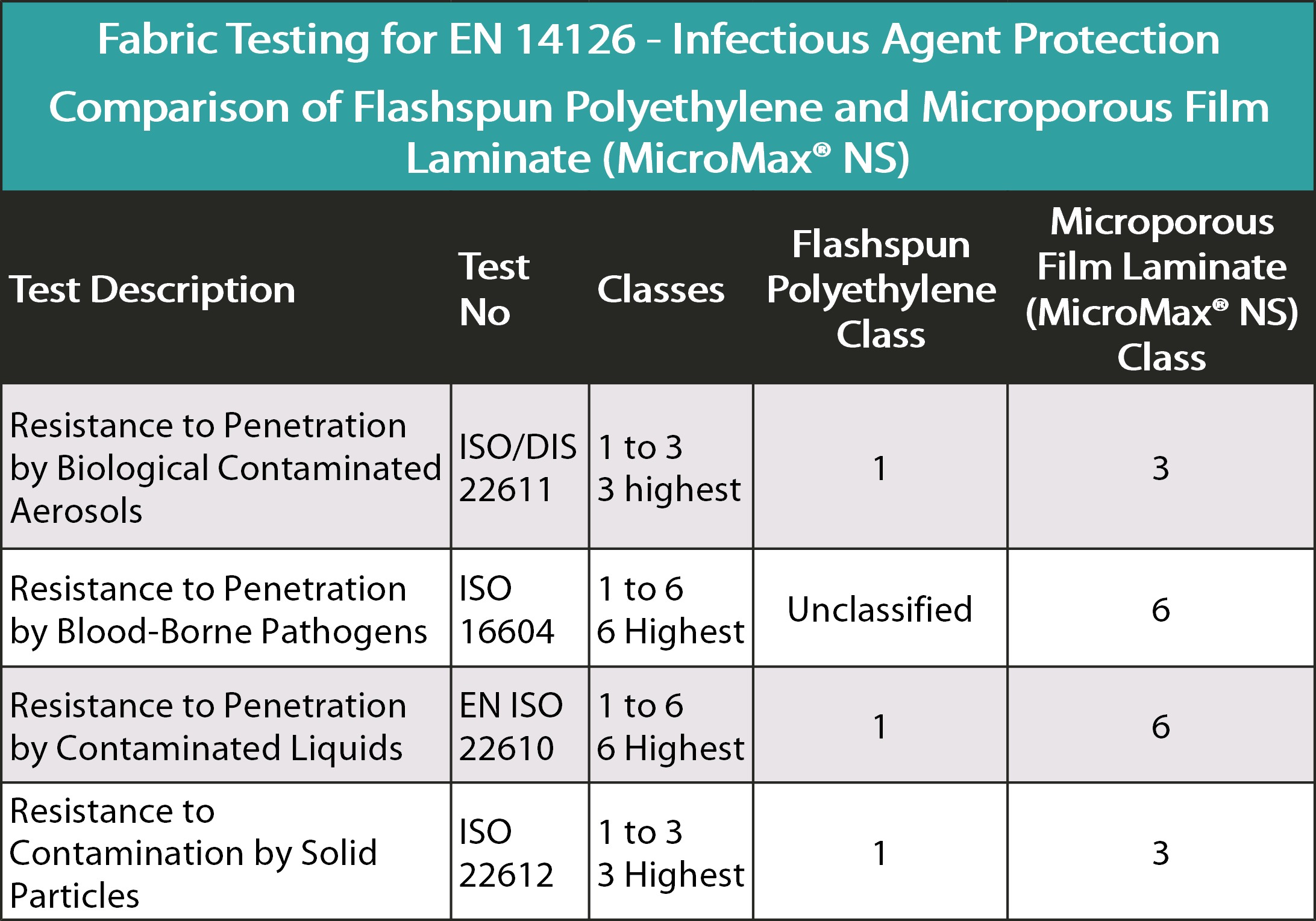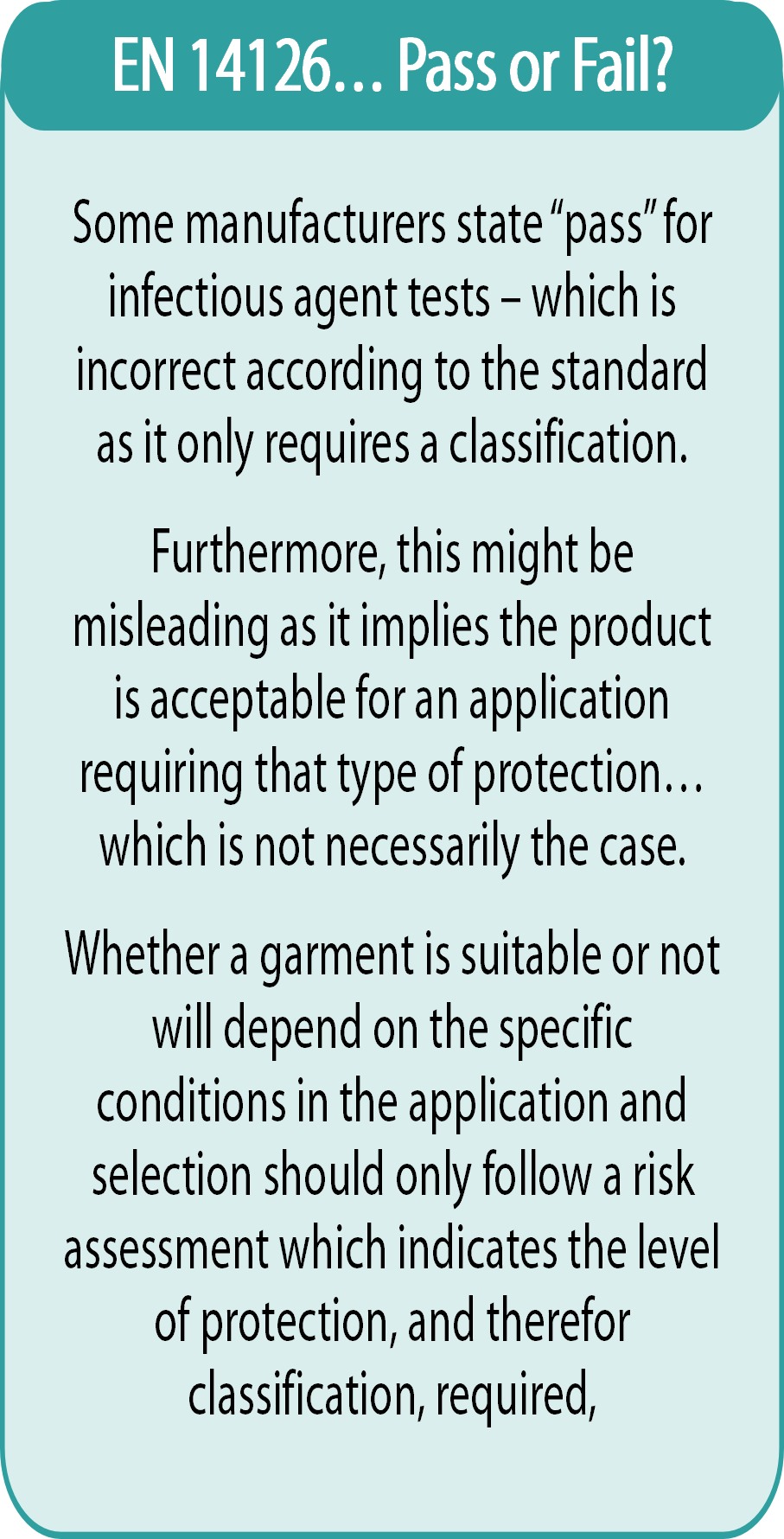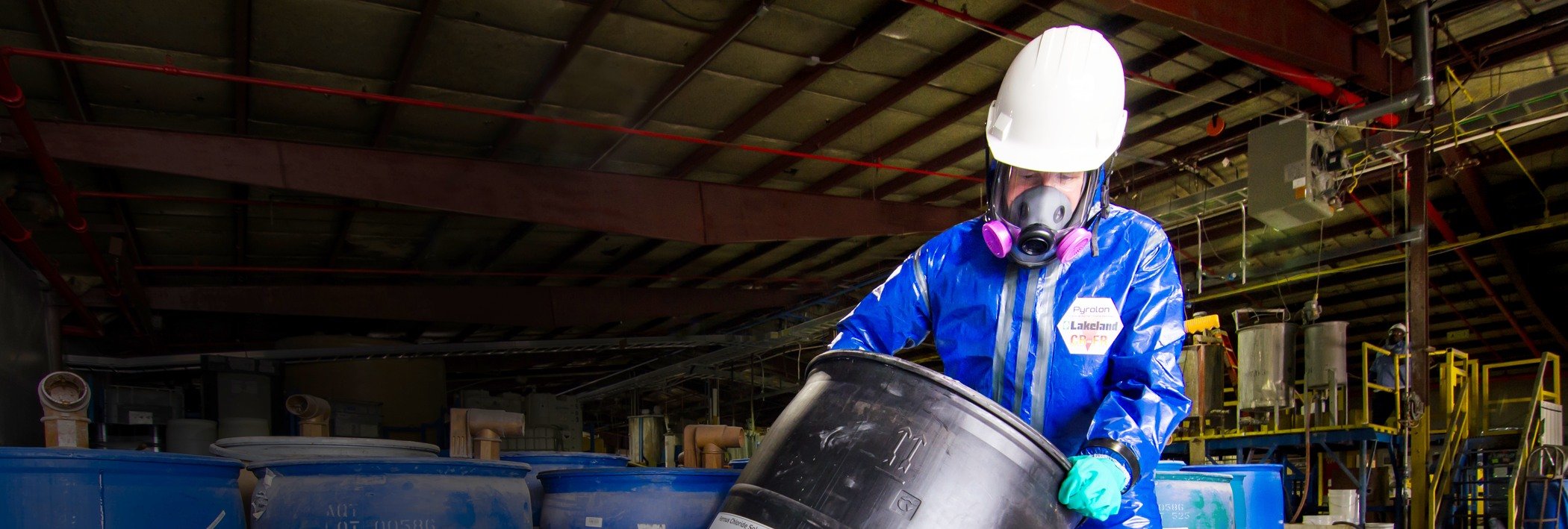There are a myriad of choices for disposable coveralls providing protection against liquid splashes and sprays, but how do you know which offer the best protection?

Where Type 6 protection – protection against aerosol sprays of liquid chemicals – is important, navigating the huge choice of Type 6 disposable coveralls on the market is something of a challenge. Not to mention the myths about the products themselves and the standards associated.
With so many options to choose from, selecting the best safety clothing to deal with chemical hazards in the workplace can be confusing. For Safety Managers, the most critical concern is protection, but how can they separate fact from fiction?
Fortunately, there are two things that make this a relatively simple question to answer:
- First, only three types of fabric are used for Type 5 & 6 coveralls and, second,
- CE standard tests provide a very clear answer to what coveralls provide the best protection.
In this blog, I’ll look at the different fabric types for coverall fabrics and the evidence of CE tests, providing Safety Managers with the information they need to select the best PPE for their activities.
What types of fabric are used in Type 5 & 6 clothing?
While dozens of brands offer Type 6 safety clothing, there are only three different types of fabric.
All disposable coveralls are based on non-woven materials. These materials are produced by melting thermoplastics before extruding them into fibers and/or films and then bonding them to produce a finished fabric.
There are, of course, variations of this method (all producing different results), but only three types are used for Type 6 disposable clothing;
- Flashspun Polyethylene, known by its only brand, “Tyvek®”,
- Microporous film laminate
- “SMS” or “spunbond-meltblown-spunbond” polypropylene
These three fabrics are summarized in the table below. Each has different strength, breathability and, of course, liquid protection.
The first thing to note is that none of these fabrics are solid barrier films; each has a structure that allows some degree of permeability. Flashspun Polyethylene and SMS are both fibrous in structure (meaning there are gaps between the fibers) and microporous film is, as the name suggests, porous at a microscopic level. This means that any permeation test – which measures how a liquid will permeate through a fabric at a molecular level – is superfluous; the liquid will penetrate through the gaps before it permeates through the material of the structure. Thus, we need to consider how well each will resist penetration, not permeation, and their effectiveness in repelling a liquid. Fortunately, CE standards require good test methods for assessing this.
The evidence of penetration and repellency testing
The standard test for Type 6 garment fabrics – known as the “Gutter Test” – measures both penetration and permeation. It is defined in EN 6530 and involves pouring a specified amount of specific liquids onto a sample of fabric suspended in a “gutter” (hence the name). The liquid is poured at a 45o angle, and how much of it penetrates through (the penetration %) and how much runs off the edge (the repellency %) is recorded.
Four chemicals are suggested and categorized based on three classifications (as shown in the table).
A pass requires at least one Class 3 for repellency (i.e. minimum >90%) and one Class 2 for penetration (i.e. minimum <5%).
This test shows how well different fabrics resist penetration of different liquids. The table below compares these results against the fabrics used for Type 6 coveralls – Flashspun Polyethylene with Lakeland’s Safegard® GP (SMS) and MicroMax® NS (Microporous film laminate).
For the first two chemicals, sulphuric acid (30%) and sodium hydroxide (10%), the results for both penetration and repellency are the same for all fabrics: Class 3… the highest classification. However, for the third and fourth chemicals (which are more difficult to protect against) there are obvious differences:
1. The SMS fabric fails to achieve any classification for both penetration or repellency: the results are less than the minimum required for Class 1, showing this fabric offers the poorest liquid protection.
2. For both penetration and repellency, the microporous film laminate achieves a higher class then the flash-spun polyethylene.
So the results of the Type 6 penetration and repellency test are very clear; the microporous film laminate – Lakeland’s MicroMax NS – (it’s worth noting that microporous film laminates will not always be of the same quality and so the results will be different) offers the best resistance to liquid penetration, achieving higher protection classes than the other fabrics for the two more challenging chemicals.
The evidence of EN 14126 testing
The second source of publicly available evidence lies in the testing included in the EN 14126 standard for protection against infectious agents. It contains four different tests which measure a fabric’s ability to resist being penetrated by mediums, such as liquids that may be contaminated with bacteria or other infectious agents. This standard is critical for garments used in applications such as the ongoing Ebola relief efforts in Africa. The four tests and classifications are shown in the table below.
(The results for SMS fabric are not shown. The fabric is untested but would show unclassified for all tests).
The first thing to point out is that there is no pass or fail described in this standard; it simply requires that products are classified according to the tables in the standard and the results achieved.
The results are perhaps even more conclusive than the penetration/repellency tests. In three of the four tests, the flash-spun polyethylene only achieves class one, compared to the highest classes (either 3 or 6) achieved by the microporous film laminate, Micromax NS fabric.
Even more critically, in the important ISO 16604* test, (which measures resistance to infected body fluids at pressure so it is vital for Ebola protection and similar applications), the flash-spun polyethylene is “unclassified”.
In other words, it fails to achieve the lowest Class 1.
The microporous film laminate, MicroMax NS, on the other hand, achieves the highest Class 6. Clearly, the level of protection against body fluids is markedly better with the microporous film laminate.
* Note: some manufacturers claim their garments are classified according to the ISO 16603 test listed in the standard. However, there is no classification for ISO 16603. The standard clearly states that 16603 is not intended to indicate any level of protection.
The 16603 test is a precursor test for ISO 16604 and is designed to identify the pressure at which to begin testing. Often manufacturers do this when the results for ISO 16604 are poor – but doing so is incorrect and misleading.
Conclusion
Given the large number of products (or at least brands) available for Type 6 coveralls, and the many claims and counter-claims about their quality, comfort and effectiveness, where liquid protection is the critical issue (and, of course, protection is always the critical issue) it is useful to understand two key points:
- There are only three types of fabric used for Type 6 coveralls
- Of these, microporous film laminate (subject to the quality of the fabric – not all are the same) offers superior liquid protection and this is quite clearly proved by the Type 6 penetration and repellency testing and by the testing required within the EN 14126 infectious agent standard.


